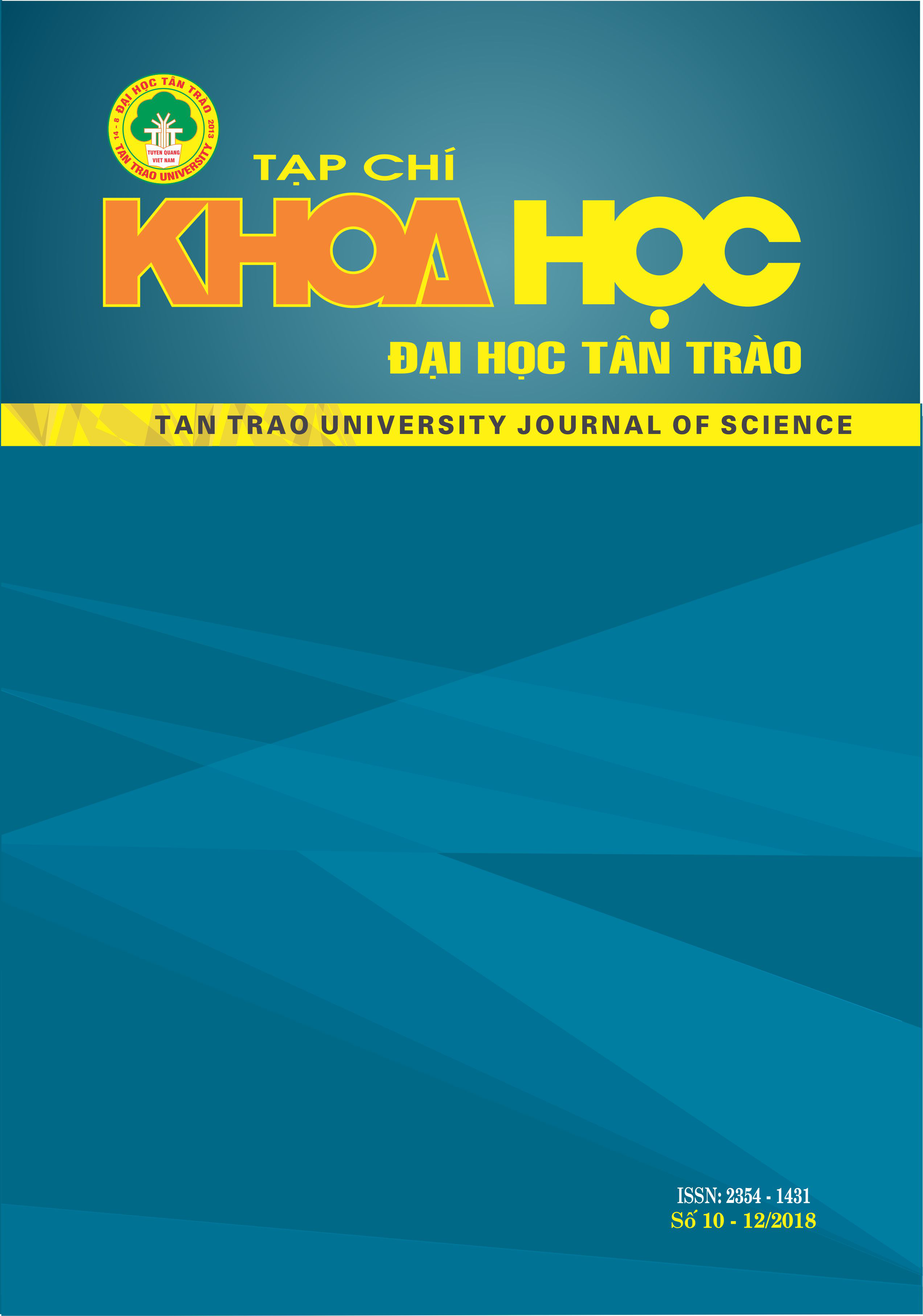Survey results on the transformation of god characters from Vietnamese myths to fairy tales
DOI:
https://doi.org/10.51453/2354-1431/2018/191Keywords:
God; myths; fairy tales; transformation; Viet Nam.Abstract
By understanding the transformation of god character system in a systematic and connective process from Vietnamese myths to fairy tales, we can observe development steps in awareness level in thinking, in spiritual life of Vietnamese people and the society, thereby being aware of the development in the thinking process and the high-faluting and romantic process in arts of the ancients.
Similarities and differences can be observed in the art of character building in myths and fairy tales. This is also an attractive factor which stimulates us to study this topic passionately. Under the framework of this article, we will focus on analyzing the following contents: 1 - The concept of god character and the documentary scope of the survey; 2 - Description and survey of gods in myths of
Vietnamese ethnic minorities ; 3 - Description and survey of god characters in some typical Vietnamese fairy tales; 4 - Remark and evaluation of the transformation of god characters from myths to fairy tales using survey results.
Downloads
References
1. Nguyễn Đổng Chi (1956), Lược khảo về thần thoại Việt Nam, Ban Văn Sử Địa, Hà Nội.
2. Nguyễn Đăng Duy, “Văn hóa tâm linh”, Nxb Hà Nội, 1998, tr.95.
3. Vũ Tự Lập (1991), Văn hóa và cư dân đồng bằng sông Cửu Long, Nxb KHXH Hà Nội.
4. Jean Chevalier, Alain Gheerbrant chủ biên (1997), Từ điển biểu tượng văn hoá thế giới, Phạm Vĩnh Cư phụ trách nhóm dịch, Nguyễn Xuân Giao, Lưu Huy Khánh, Nguyên Ngọc, Vũ Đình Phòng, Nguyễn Văn Vỹ dịch, Nxb Đà Nẵng và Trường Viết văn Nguyễn Du xuất bản.
5. Nguyễn Bích Hà (2010), Văn học dân gian Việt Nam, in lần thứ hai, Nxb ĐHSP.
6. Vũ Ngọc Khánh chủ biên (1989), Nhân vật thần kỳ các dân tộc thiểu số Việt Nam, Nxb Văn hóa Dân tộc, Hà Nội.
7. Nguyễn Đổng Chi sưu tầm và biên soạn (1958 –1982), Kho tàng truyện cổ tích Việt Nam, 5 tập, Nxb Khoa học xã hội Hà Nội.
8. Đặng Nghiêm Vạn chủ biên với: Tổng tập văn học các dân tộc ít người Việt Nam, tập 2 – truyện cổ dân gian, Nxb Đà Nẵng, 2002.
9. Nguyễn Thị Huế chủ biên, Trần Thị An với: Tổng tập văn học dân gian người Việt, tập 6 - truyện cổ tích thần kỳ, Nxb Khoa học xã hội, 2004.
10, 11, 12. Xem 5.
13. E.M.Meletinxki (1958), Nhân vật truyện cổ tích hoang đường - xuất xứ của hình tượng, tài liệu đánh máy lưu tại Viện Văn học.
14. Hoàng Tiến Tựu (1998), Văn học dân gian – giáo trình đào tạo giáo viên trung học cơ sở hệ cao đẳng sư phạm, Nxb Giáo dục Hà Nội, tr.72].
15. Xem 5.
16. Nguyễn Thị Dung (2015), “Vai trò quan trọng của thế giới nhân vật kỳ ảo trong việc giảng dạy Văn học dân gian trong nhà trường phổ thông”, Kỷ yếu Hội thảo Quốc tế lần thứ V tại Thái Lan về Khoa học tự nhiên và Khoa học xã hội: Nghiên cứu và Đổi mới vì sự phát triển của Cộng đồng và Khu vực 2015 (viết tắt là The ICSSS 2015).
18. Nguyễn Thị Dung (2016), “Thế giới mộng ảo, một thế giới biểu tượng thú vị trong truyện cổ tích thần kỳ Việt Nam”, Kỷ yếu Hội thảo Quốc tế lần thứ VI tại Thái Lan về Khoa học tự nhiên và Khoa học xã hội: Đổi mới vì sự thịnh vượng chung 2016 (viết tắt là The ICSSS 2016)
Downloads
Published
How to Cite
Issue
Section
License

This work is licensed under a Creative Commons Attribution-ShareAlike 4.0 International License.
All articles published in SJTTU are licensed under a Creative Commons Attribution-ShareAlike 4.0 International (CC BY-SA) license. This means anyone is free to copy, transform, or redistribute articles for any lawful purpose in any medium, provided they give appropriate attribution to the original author(s) and SJTTU, link to the license, indicate if changes were made, and redistribute any derivative work under the same license.
Copyright on articles is retained by the respective author(s), without restrictions. A non-exclusive license is granted to SJTTU to publish the article and identify itself as its original publisher, along with the commercial right to include the article in a hardcopy issue for sale to libraries and individuals.
Although the conditions of the CC BY-SA license don't apply to authors (as the copyright holder of your article, you have no restrictions on your rights), by submitting to SJTTU, authors recognize the rights of readers, and must grant any third party the right to use their article to the extent provided by the license.


